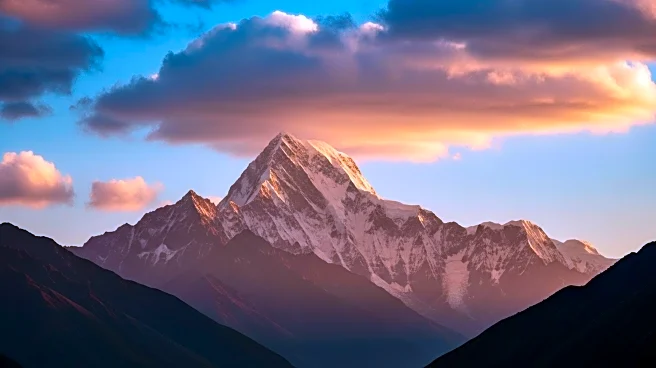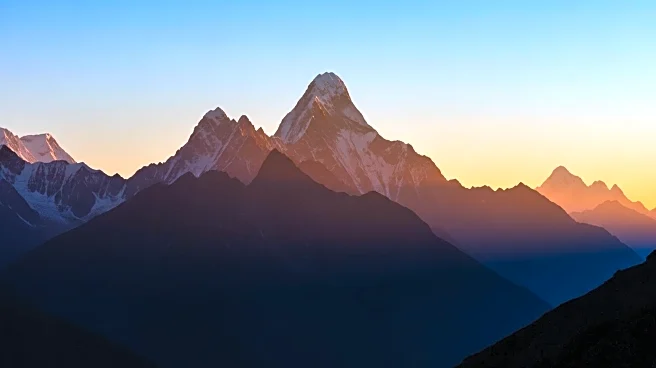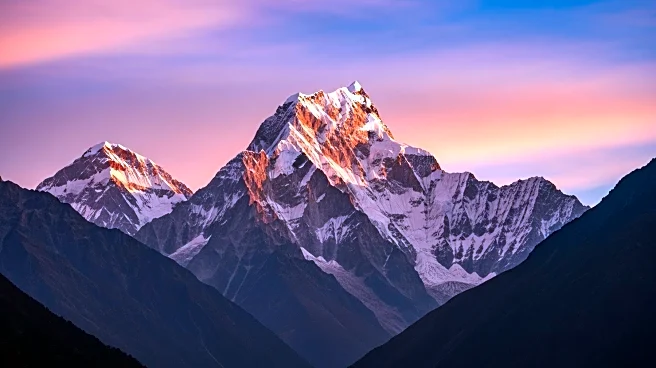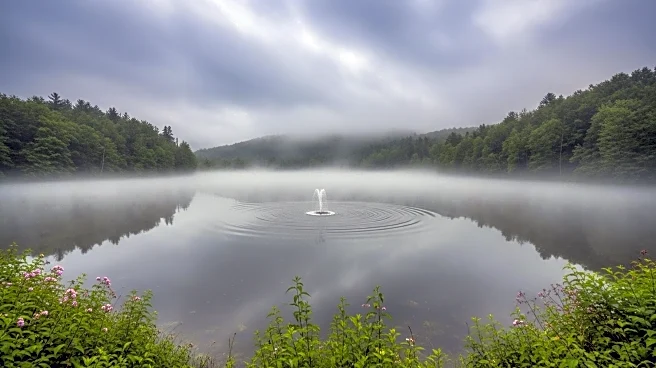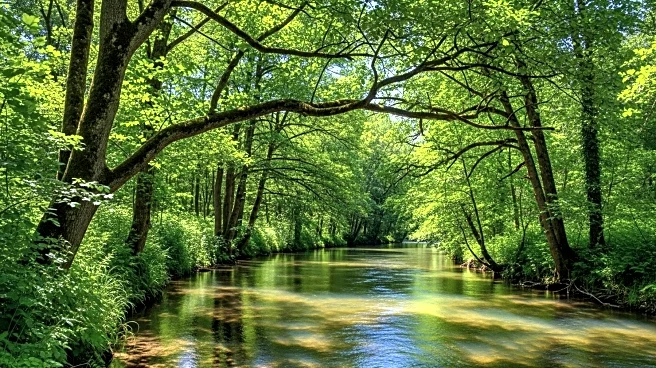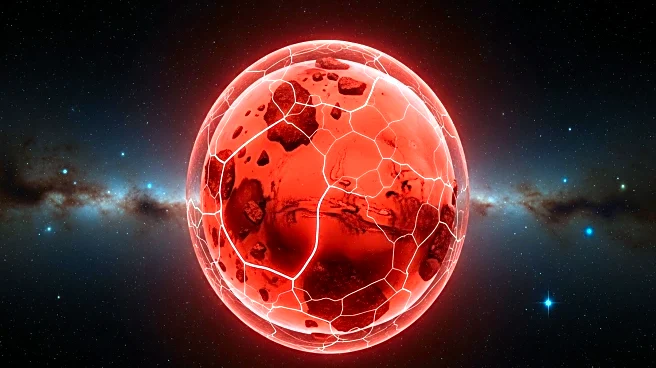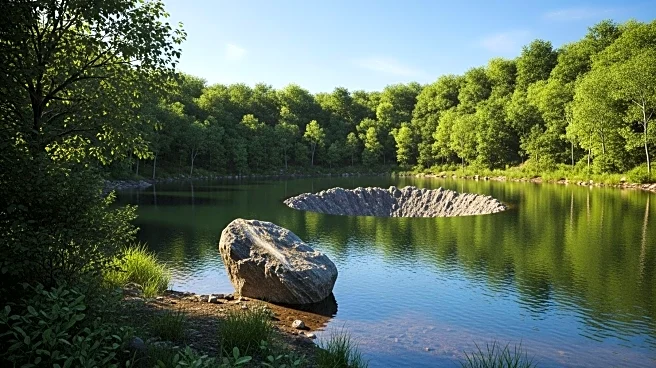What's Happening?
Recent research has challenged a century-old theory regarding the geological structure beneath the Himalayas. Traditionally, it was believed that the Indian and Asian tectonic plates stacked to form a double-thickness crust supporting the mountain range. However, new findings suggest a mantle layer exists between the crusts, providing additional support. This discovery was made through computer simulations and seismic data analysis, revealing a more complex geological structure than previously thought.
Why It's Important?
The study's findings have significant implications for understanding the geological processes that shape the Himalayas. By identifying a mantle layer between the crusts, researchers can better explain the region's uplift and stability. This knowledge is crucial for geologists and can influence future research on tectonic activity and mountain formation. It also highlights the importance of revisiting established scientific theories with new data and methodologies.
What's Next?
Further research is needed to validate the new geological model and explore its implications for the Himalayas' formation and evolution. Scientists may conduct additional simulations and field studies to gather more evidence supporting the mantle layer theory. The study could lead to a reevaluation of geological models used in other mountain ranges, potentially reshaping our understanding of Earth's tectonic processes.
Beyond the Headlines
The study challenges the scientific community to reconsider long-standing theories and embrace new perspectives. It underscores the dynamic nature of scientific inquiry, where new discoveries can redefine established knowledge. The findings may inspire geologists to explore other regions with similar geological complexities, fostering innovation in the field.
